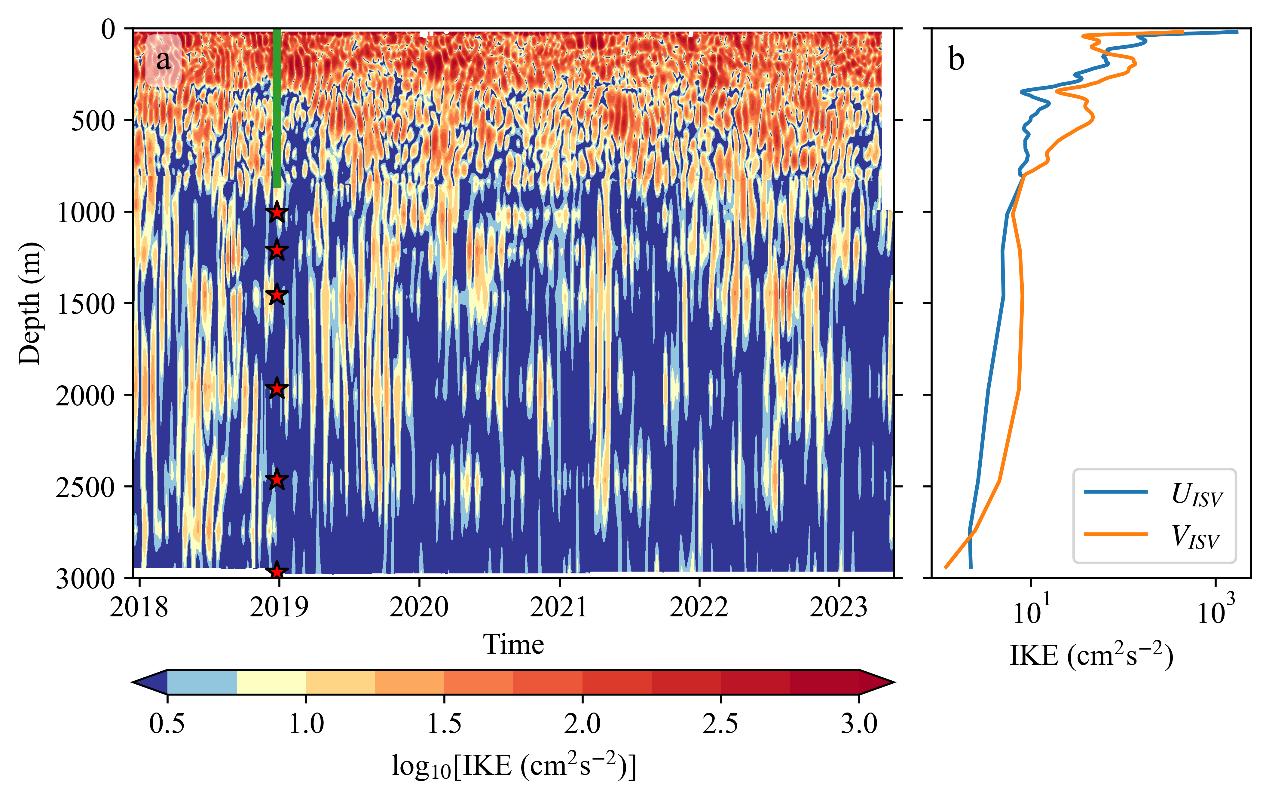
The deep ocean has long been viewed as a quiet realm, largely isolated from the dynamic processes that shape Earth's climate. However, new observations in the western equatorial Pacific have revealed robust intraseasonal variability at depths of 1,500–3,000 meters, with kinetic energy levels reaching up to 10 cm2s-2.
A research team led by Prof. WANG Jianing from the Institute of Oceanology of the Chinese Academy of Sciences (IOCAS), analyzed five consecutive years of mooring data collected at the equator (142°E). Their analysis uncovered significant intraseasonal kinetic energy (IKE) in the deep ocean, which is primarily concentrated in the 40–90-day period and dominated by meridional currents.
The study was recently published in Journal of Physical Oceanography.
Spectral analysis indicates that approximately 81% of deep-ocean IKE is attributable to equatorial Yanai waves (also known as mixed Rossby–gravity waves) with energy concentrated in vertical modes 2–6. "This finding provides a new perspective on how energy and signals from the upper ocean are transmitted to the deep ocean," said Dr. ZHANG Hang, the first author of the study.
By integrating reanalysis data, the researchers traced the source of this deep-ocean IKE to the intermediate layer (1,000–1,750 meters) between 134°E and 137°E, a region near the western boundary. In this area, strong intermediate western boundary currents generate barotropic instability through horizontal shear, exciting wave energy that propagates eastward and downward along the equator, closely aligning with the theoretical ray paths of Yanai waves.
Furthermore, the study identified a clear seasonal modulation in the dominant frequency of deep-ocean intraseasonal variability. At a depth of approximately 2,500 meters, this frequency shows a significant negative correlation with the zonal velocity of the upper deep branch of the Pacific Meridional Overturning Circulation (U-PMOC). This anti-correlation is explained by a Doppler shift effect, confirming the westward phase propagation of the observed Yanai waves.
Previous studies on oceanic intraseasonal variability have mostly focused on the upper ocean, where energy is typically thought to originate from surface forcing (e.g., the Madden–Julian Oscillation). In contrast, this research reveals a previously underrecognized energy pathway: Yanai waves efficiently channel intraseasonal kinetic energy directly from the intermediate ocean to the deep, and even abyssal layers.
Understanding how energy propagates from the upper ocean to the deep interior is critical for improving the vertical energy budget in ocean models. "Our results demonstrate that equatorial wave dynamics, particularly Yanai waves, act as a key link between upper-ocean and deep-ocean dynamical systems," added Prof. WANG, the corresponding author of the study.

Time-depth variation of intraseasonal kinetic energy observed by moorings, and vertical profiles of the time-averaged intraseasonal kinetic energy for the zonal and meridional velocity components. (Image by IOCAS)

86-10-68597521 (day)
86-10-68597289 (night)

52 Sanlihe Rd., Xicheng District,
Beijing, China (100864)

